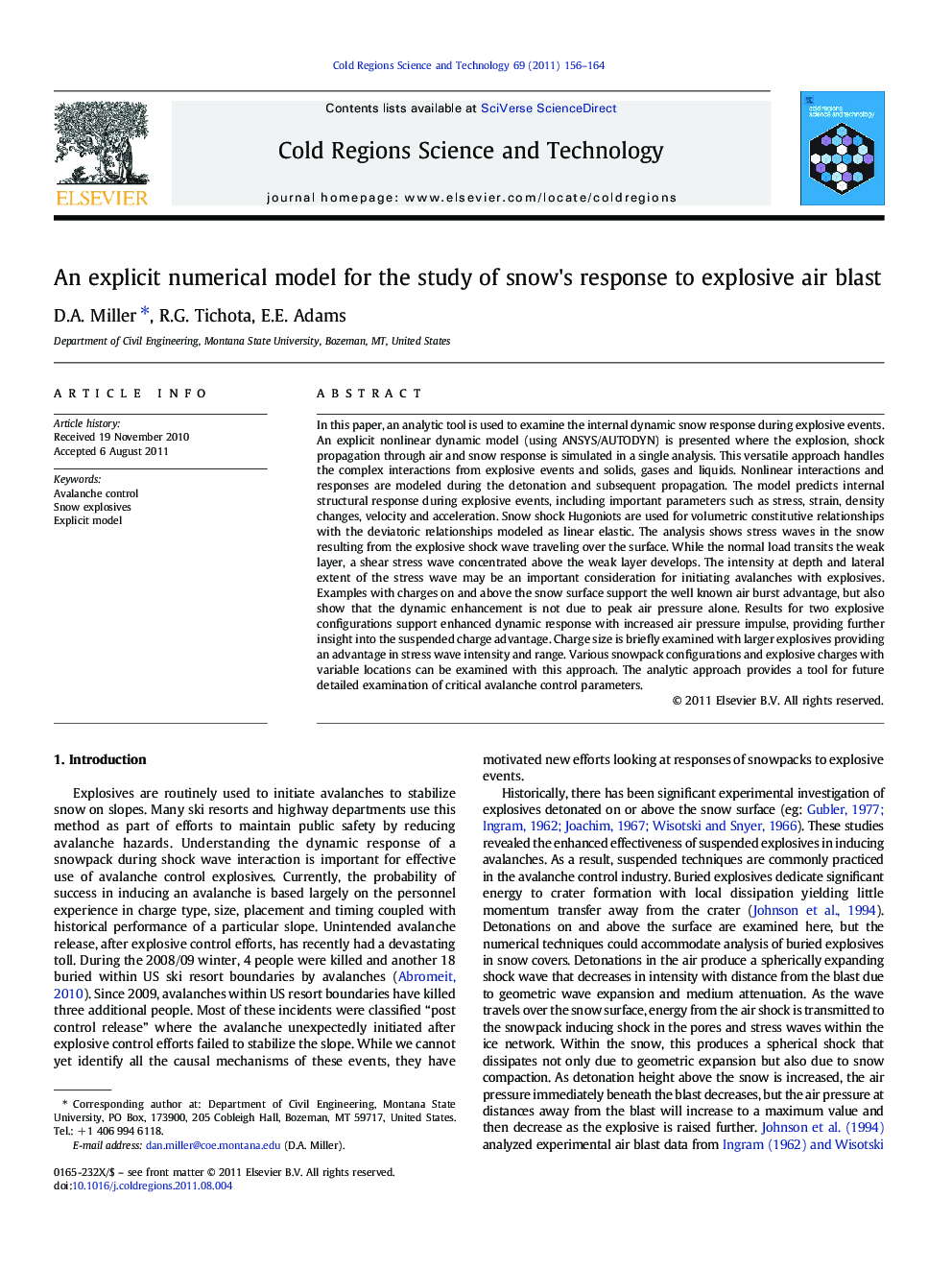| Article ID | Journal | Published Year | Pages | File Type |
|---|---|---|---|---|
| 4676069 | Cold Regions Science and Technology | 2011 | 9 Pages |
In this paper, an analytic tool is used to examine the internal dynamic snow response during explosive events. An explicit nonlinear dynamic model (using ANSYS/AUTODYN) is presented where the explosion, shock propagation through air and snow response is simulated in a single analysis. This versatile approach handles the complex interactions from explosive events and solids, gases and liquids. Nonlinear interactions and responses are modeled during the detonation and subsequent propagation. The model predicts internal structural response during explosive events, including important parameters such as stress, strain, density changes, velocity and acceleration. Snow shock Hugoniots are used for volumetric constitutive relationships with the deviatoric relationships modeled as linear elastic. The analysis shows stress waves in the snow resulting from the explosive shock wave traveling over the surface. While the normal load transits the weak layer, a shear stress wave concentrated above the weak layer develops. The intensity at depth and lateral extent of the stress wave may be an important consideration for initiating avalanches with explosives. Examples with charges on and above the snow surface support the well known air burst advantage, but also show that the dynamic enhancement is not due to peak air pressure alone. Results for two explosive configurations support enhanced dynamic response with increased air pressure impulse, providing further insight into the suspended charge advantage. Charge size is briefly examined with larger explosives providing an advantage in stress wave intensity and range. Various snowpack configurations and explosive charges with variable locations can be examined with this approach. The analytic approach provides a tool for future detailed examination of critical avalanche control parameters.
► Explicit nonlinear model simulating explosive air blast over snow. ► Shear stress wave concentrated above the weak layer develops. ► Suspended charges increased air pressure impulse and resulting response. ► Larger explosives provided advantage in stress wave intensity and range.
